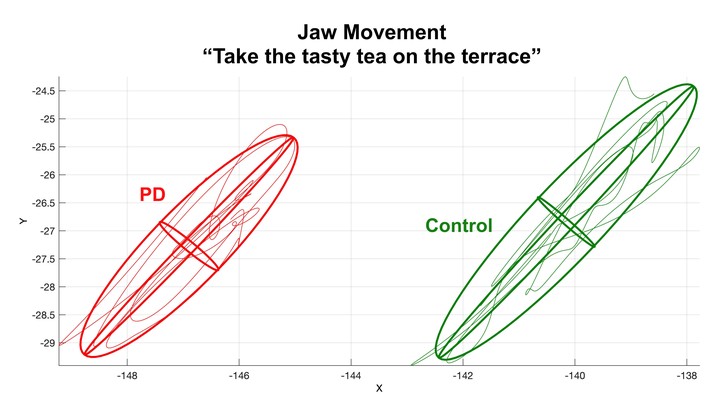 Sample jaw movement trajectories during sentence production
Sample jaw movement trajectories during sentence productionAbstract
Purpose: To further understand the effect of Parkinson’s disease (PD) on articulatory movements in speech and to expand our knowledge of therapeutic treatment strategies, this study examined movements of the jaw, tongue blade, and tongue dorsum during sentence production with respect to speech intelligibility and compared the effect of varying speaking styles on these articulatory movements.
Method: Twenty-one speakers with PD and 20 healthy controls produced 3 sentences under normal, loud, clear, and slow speaking conditions. Speech intelligibility was rated for each speaker. A 3-dimensional electromagnetic articulograph tracked movements of the articulators. Measures included articulatory working spaces, ranges along the first principal component, average speeds, and sentence durations.
Results: Speakers with PD demonstrated significantly smaller jaw movements as well as shorter than normal sentence durations. Between-speaker variation in movement size of the jaw, tongue blade, and tongue dorsum was associated with speech intelligibility. Analysis of speaking conditions revealed similar patterns of change in movement measures across groups and articulators: larger than normal movement sizes and faster speeds for loud speech, increased movement sizes for clear speech, and larger than normal movement sizes and slower speeds for slow speech.
Conclusions: Sentence-level measures of articulatory movements are sensitive to both disease-related changes in PD and speaking-style manipulations.